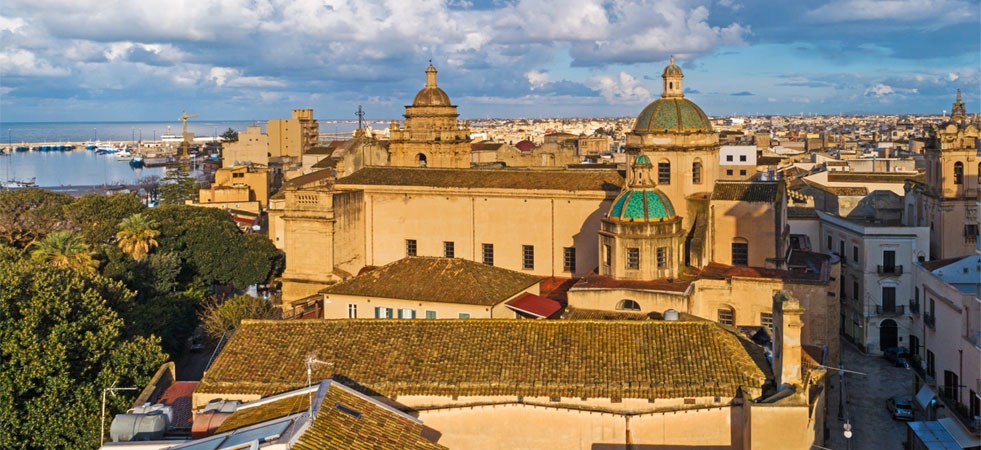
Among the most important fishing ports in Sicily, but also in all of Italy, there is that of Mazara del Vallo, a city that has a strong and centuries-old bond with the sea.
The town is located in the province of Trapani, as the crow flies, just 200 km from Tunisia. Its origins are very ancient, it even dates back to paleolithic: there are many peoples who have succeeded in the dominion of the territory on which Mazara del Vallo stands today, from the Romans to the barbarians up to the Muslims.
Mazara del Vallo: what to see
In the most ancient past, Mazara was an important Phoenician port a stone's throw from the city of Selinunte: it was then conquered by the Carthaginians first and then by the Romans, later becoming a conquest of the Arabs, with whom Mazara del Vallo went through a period of great prosperity. In this period one of the most characteristic parts of the current city develops, namely the Kasbah, a labyrinthine maze of streets with a Middle Eastern look.
With the arrival of the Normans, the city was fortified, building a castle and numerous churches, including the Cathedral.
Mazara del Vallo later even became the scene of revolutionary uprisings in 1820, collaborating with Giuseppe Garibaldi.
The historic center of Mazara del Vallo looks just like a small one medina and revolves around the Basilica of the Most Holy Saviour, born in the year 1000 and later restored in the Renaissance period. The Cathedral houses a marble statue of St. Vincent and the Transfiguration on Mount Tabor. Not far from the Basilica is one of the main squares of Mazara del Vallo, namely Piazza della Repubblica, real heart barocco of the town, overlooked by porticoes and elegant buildings.
The "City of 100 churches", as Mazara del Vallo is also nicknamed, also has other noteworthy religious buildings, such as the Baroque church of San Francesco, rich in frescoes, the Church of the Madonna delle Giummare , Church of San Nicolò Regale, located on the banks of the Mazarò river and with a nucleus Arab-Norman.
In Mokar Square it can be admired instead the Norman Arch, or what remains of the fortress built by Ruggero d'Altavilla to celebrate the triumph over the Saracens. Today in place of the Castle there is Villa Yolanda, a public garden much loved by citizens to spend a few hours relaxing among the luxuriant vegetation.
Museums and beaches of Mazara del Vallo
Another nickname of Mazara del Vallo is "the City of the Satyr" and the reason is linked to the presence, inside the former Church of Sant 'Egidio, of the Museum of the Dancing Satyr which houses a very precious find: it is the Dancing Satyr, small sculpture of the school of Praxiteles dating back to the IV BC. The statue shows the satyr in a trance, with his mouth ajar, his hair suspended in the air, as if he were dancing now drunk on wine.
Walking through the alleys of the City of Satyr many elegant buildings can be seen and among these the most striking are the Bishop's Palace, built between the 500th and 700th centuries in a vaguely classical style and a Doric portal. The most elegant part is the courtyard, in the center of which there is an elegant fountain while on one side there is a wonderful loggia made up of round arches.
Right in front of the Bishop's Palace is the Seminary Palace, dating back to 1710 and seat of Diocesan Museum: the facade of this building is very beautiful, with an upper loggia supported by a portico with 11 arches.
After a walk on the seafront, between fish markets and restaurants where you can taste the tasty local cuisine, you can reach the city's beaches: the Capo Feto beach, formed by soft and fine sand and the Tonnarella beach, 8 km long and much loved by sportsmen who practice windsurfing and surfing, being very windy.
Then there is Cala dei Turchi, a particularly rocky and jagged stretch of coast, where the waters are exceptionally crystalline.
Not far from the center of Mazara del Vallo is the archaeological site of Roccazzo, where it is possible to see the remains of huts, trenches and spool tombs.
What to do in Mazara del Vallo and surroundings
© Image by Ludvig14, CC BY-SA 4.0, via Wikimedia Commons









